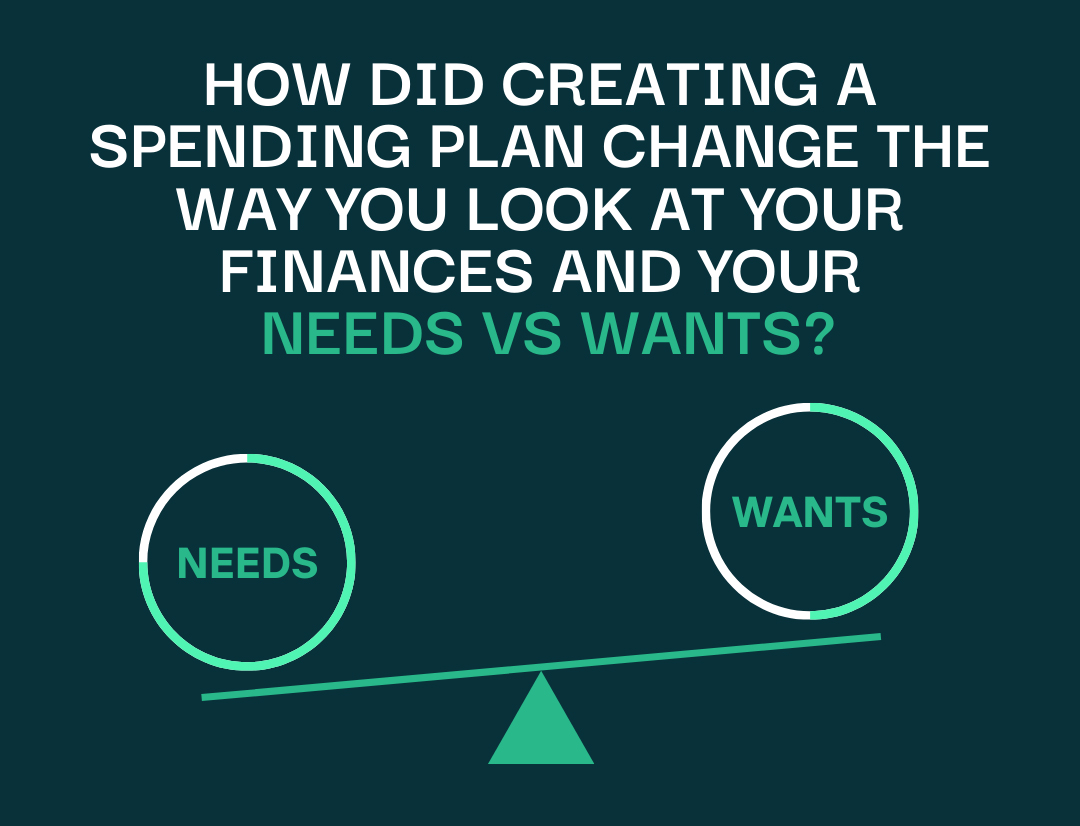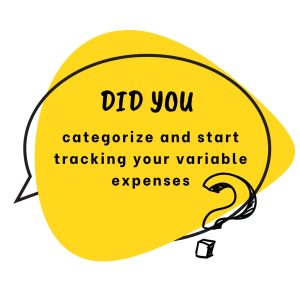
28 Dec How did creating a spending plan change the way you look at your finances and your needs vs wants?
Most of us spend many years without budgeting and managing our finances in a structured and organized way. As a matter of fact, statistics show that only 32% of households prepare a monthly budget.
If you started budgeting recently, it means that you have already created your first spending plan, a practical way to distribute your income among the many expenses that you have to incur.
It’s common for people to prepare a monthly spending plan, although its duration can be weekly, biweekly, quarterly, or even yearly, depending on your situation and financial goals.
When creating a spending plan for the first time, many people start seeing their finances from an entirely new angle.
After years of managing your expenses in a vague and unorganized fashion, creating a spending plan causes you to make several considerations. Here are some of them.
- Some expenses are essential, while others aren’t.
- Even non-essential expenses have different degrees of importance.
- The importance of each expense can be subjective.
- To live within your means, you need to set spending limits.
- Categorizing your expenses helps you track your expenses and stick to the limits you have set.
- Tracking and categorizing your expenses may help you save money.
- Major occasional expenses should be planned with sufficient advance to avoid sacrificing smaller, regular ones.
First, you have to list your sources of income.
This is easy if you only have one stable job, but there are cases where you get your income from several sources, including:
- full-time jobs
- part-time jobs
- freelancer gigs
- profit from your business(es)
- rent from your tenant(s)
- interests on your savings account
- returns on your bonds
- dividends from your shares
- capital gains
- allowances from relatives.
Getting a clear idea of your overall monthly income is a necessary step to organizing your spending. Moreover, comparing your current income with your current or desired level of spending may raise several questions. Here are some examples.
- Should I find ways to increase my income to afford a higher level of spending?
- Should I sacrifice some of my expenses to live within my means?
- Which share of my income is being eaten away by debt repayments?
- Would lowering my current level of spending impact my quality of life significantly?
Let us know your thoughts and feelings about your current income level and whether you plan to increase it in the future or not.
Then, you have separate needs from wants.
Which of your expenses are the result of unavoidable needs, and which are the result of your choices?
In some cases, the separation between needs and wants is obvious. For example, these expenses are almost always needs:
- essential groceries
- rent or mortgage payments
- health insurance premiums
- electricity bills
- phone bills.
In contrast, these expenses are almost always wants:
- dining out
- cable TV
- weekend trip
- designer clothes
- movie ticket.
However, there are scenarios in which your specific situation determines whether an expense is a want or a need.
Imagine you’re living in a big metropolitan city and already have a monthly pass to take the metro or the bus anytime you want. Is it really necessary to a car and buy gas every couple of days?
In contrast, imagine living in a countryside area with low population density and little public transportation available. In this scenario, having a car and paying for gas appears inevitable.
In the first case, gas could be classified as a want, while in the second scenario, it’s most certainly a need.
Obviously, your needs have priority over your wants. However, you should also determine how important each want is.
Is buying new clothes as important to you as going out with your friends on Friday evening? Is having an internet streaming subscription like Netflix or Amazon Prime worth having less money for your weekend trips?
Each of us has different priorities; these may also change from week to week or month to month. For example, during the winter, we may spend more time at home and look for ways to make our indoor stay as pleasant as possible. Then, when temperatures start rising, we begin valuing outdoor activities more, whether it’s having ice cream at the park or eating at some open-air restaurant.
What did you notice about your own priorities when creating your spending plan? Do your priorities change from week to week or throughout the year? Which expenses did you prioritize, and which are you more willing to sacrifice?

Did you categorize and start tracking your variable expenses?
Another important distinction is the one between fixed and variable expenses.
Fixed expenses are bills that you pay periodically, for which the amount rarely changes. These include many needs, such as health insurance premiums or electricity bills, and various wants, like a gym or streaming service subscription.
In contrast, variable expenses change from week to week and from month to month. Variables needs are things like essential groceries or pharmacy products. Instead, variable wants include a long list of products and services, ranging from a new pair of shoes to a dinner out with friends to renting a boat on Sunday morning.
While tracking fixed expenses is usually quite straightforward, as they are usually executed with one identifiable monthly payment, that’s usually not the same with variable expenses. First, you need to divide your variable expenses into clear categories, such as:
- groceries
- personal care
- clothing
- electronics
- Eating out
- entertainment
Then, you need to use a spending tracker to record each transaction you make and assign it to the relevant category. You can easily create a table on a small notebook or text editing app and use it as spending tracker. Alternatively, you can download smartphone apps that are designed for this specific purpose.
Let’s say you went to the mall yesterday, bought a new scarf, sat at a fast food restaurant to have a slice of pizza, and then went to the drug store to buy some toilet paper. In this scenario, tracking your expenses means not only recording each transaction but assigning the first one to the clothing category, the second one to the eating out category, and the third one to the personal care category. Doing so will allow you to determine the monthly spending for each category, which you can compare to the limit you had set when creating your spending plan.
Are you tracking your expenses? Are you finding it difficult to stay within your pre-set limits? When setting your limits, are you taking into account how much money you need to save for future medium-term and long-term spending needs?
Let us know any recent improvements you have made in managing your spending, any difficulties you might have incurred, and any changes you would like to make to your spending plan. Each problem has a solution, but some good advice can help you find it faster.

